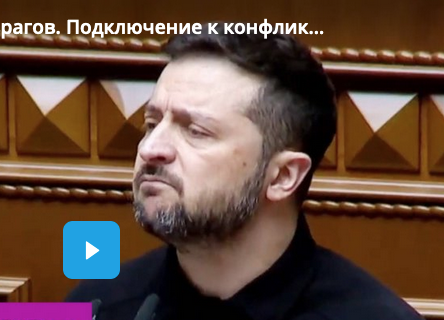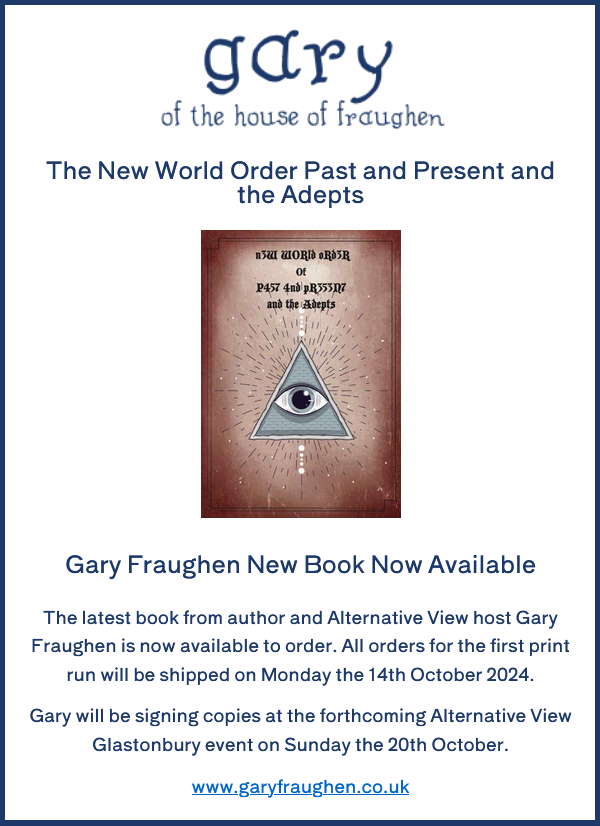
The Duran guys say that the Gig is Up for the Z man and that the US is now walking away, leaving the EU holding the Ukrainian still born basket case
Good job Western “elites”, you blew it big style didn’t you, and you know it
If we had a real democracy anywhere in EU/UK heads would be rolling, but of course we don’t, so they aren’t
Hubris is always followed by Nemesis
So who will pay the price, not the “elites” that’s for sure, failure for them just means a transfer to another globalist teat
So, as usual, the ordinary working Jacks and Jills will carry the can
Here is a Russian commentary that lists the Russian settlement demands to end the war
This lists makes it pretty clear why the US is walking away
Over to you EU
“Yesterday the not-quite-president (his term expired in May) of not-quite-Ukraine (with all of the most valuable territories and populations now part of Russia) gave a speech before the not-quite-parliament (parliamentary mandate expired in August). The speech was devoted to a “victory plan”—but you’ll have to translate the term “victory” to Ukrainian to find out what it means, because it certainly doesn’t have the same meaning as the word “victory” does in English.
The Ukrainian for “victory” is “peremoha” and within the Ukrainian context it is tightly bound to another word—”zrada”—which means “betrayal.” In the Ukraine, whenever victory appears to be in sight, this automatically implies that betrayal is just around the corner. If this seems a bit mysterious, then that’s because it is: the mysterious Ukrainian drive for self-destruction has been in action ever since that still-born nation unexpectedly popped into existence a little over three decades ago as a result of Boris Yeltsin’s cynical power grab. To confirm this, all you have to do is to trace the Ukraine’s trajectory over this period of time. It went from the most prosperous and the most highly industrialized part of the USSR to the second-poorest nation in Europe (Moldova is the poorest).
The lurching from “peremoha” to “zrada” is predictable. The following would be a typical example. The Ukrainian troops get lots of antitank weapons from the West and are ready to go and destroy some Russian tanks—”peremoha” is at hand! But then some group of Ukrainian officers sells these weapons to a Mexican narcocartel and flies to Monaco to celebrate on a luxury yacht with hookers and blow. That’s “zrada.” It makes all the other Ukrainians envious because they also would have liked to have been so clever and ruthless and to now be in Monaco celebrating on a luxury yacht with hookers and blow. But instead they have to go and sit in filthy trenches at the front without the benefit of antitank weapons. It must be understood that within the Ukrainian mindset “zrada” is not the result of some personal moral failing but akin to a force of nature that is built into the structure of Ukrainian society.
The tight coupling between victory and betrayal was evident in not-quite-president Zelensky’s speech yesterday. Going through point by point:
1.
To be victorious, the Ukraine must be allowed to join NATO right away. But there is the problem of betrayal: NATO won’t accept the Ukraine any time soon (or ever). It’s a clear case of betrayal because NATO dangled it membership before the Ukrainians practically forever and pretended to be happy when the Ukrainians wrote NATO membership as a goal into their constitution—and now, suddenly, this! Zrada!
The hesitation on the part of NATO is understandable. One particular difficulty lies in defining the term “Ukraine”: what exact territories would NATO be obligated to defend were it to become a member? The territory controlled by the Kiev regime has shrunk by something like 100,000 km2 over just the past two months and keeps shrinking daily. NATO could exclude from consideration the new Russian regions (Crimea, Donetsk, Lugansk, Zaporozhye and Kherson) even though some of them are still (though probably not for long) partially under Ukrainian occupation.
But then what is NATO to do about Kharkov region, which is increasingly under Russian control? Its Kremlin-appointed governor now supports a public referendum on joining Russia but insists that all of Kharkov residents should be able to vote. Kharkov is a large Russian city and, given the choice, the vast majority of its inhabitants would no doubt want to once again be part of Russia.
And then there is Sumy region which adjoins Russia’s Kursk region, a tiny corner of which the Ukrainians had invaded this summer for no adequately understood reasons. Kursk, as far as the Russians are concerned, is a monkey trap for Ukrainian monkeys. A monkey trap is a gourd with some nuts in it and a hole big enough for a monkey to squeeze its hand into but too small for a monkey’s fist to fit through. The monkey reaches in, grabs some nuts and then can’t pull out its fist. It is stuck because it doesn’t want to let go of the nuts.
The Ukrainians, and quite a lot of foreign mercenaries, are on a conveyor belt of death in Kursk but can’t withdraw because such a defeat would completely demoralize the entire population. However, the Kiev regime understands that its withdrawal from Kursk is inevitable and is evacuating parts of the Sumy region, including the city of Sumy itself, because once they pull out of Kursk the Russians are sure move into Sumy: now that they have been forced to amass a large fighting force on the border of Sumy region, the urge to use it to liberate yet another Ukrainian region has become irresistible. And so NATO would need to take Sumy region off the list as well.
Should we stop there? Perhaps not. Dnepropetrovsk region is not securely Ukrainian either. It straddles Dniepr River and the Russian forces are moving up E50 toward the river, getting ready to liberate Pokrovsk, and will in due course come to the Donesk-Dnepropetrovsk boundary. Are they going to stop at that boundary? That doesn’t seem likely. After all, Yekaterinoslav (as it was originally called) was founded in 1776 by Russians, is a quintessentially Russian city, and so needs to be liberated as well. NATO should take Dnepropetrovsk region off the list of territories for it to defend as well.
We could continue in this vein for quite a while. But NATO can’t possibly work with any of that! However, that’s not Zelensky’s problem: he has a victory plan. And that plan would work (or so he wants everyone to think) except for NATO’s perfidious act of treachery on first enticing the trusting Ukrainians with the promise of NATO membership, and now playing hard to get. Those NATO-heads sure are clever and wouldn’t the Ukrainians want to be just like them.
2.
Zelensky has a brilliant plan to use Western-provided long-range weapons (and crews) to strike deep into Russian territory, thus making it impossible for Russian forces to continue liberating more and more Kiev-held Russian territory. After all, NATO provided these weapons, and the crews to program them and to man the launch platforms, but they are limiting their range to formerly Ukrainian territories. (It is also a bit disconcerting that the Russians have learned to shoot down these fancy Western weapons with great certainty — all day and all night if need be — making their use a huge waste of money, but let’s not dwell on that.)
But now it turns out that NATO refuses to strike deep into Russian territory. Apparently, the NATO-heads believe Russia’s entirely spurious claim that they would strike deep into NATO territory in response. The Russians are bluffing, of course! (Between you and me, the Russians never bluff.) In any case, this is clearly a case of betrayal: NATO gave these fancy weapons to the Ukrainians but now isn’t allowing them to use it. To add insult to injury, the Ukrainians can’t even sell these weapons to Mexican narcocartels because they have to be controlled by NATO crews! Zrada!
3.
As part of his victory plan, Zelensky made a generous offer to the West: to exploit together the Ukraine’s most valuable and plentiful lithium reserves… which are located under territory that is now under Russian control. This doesn’t quite fit the “peremoha-zrada” model; it is just plain funny. That Zelensky sure knows how to troll!
But the rest of Zelensky’s plan can be parsed in much the same way: Zelensky offers “peremoha” but the inimitable perfidy of its Western friends turns it into a “zrada.” The unspoken bit is the last bit of “zrada” in which Zelensky takes the money and runs away while everyone applauds this final and most laudable act of Ukrainian betrayal.
Zelensky is a comedian and, being a professional, he knows that the show must go on no matter what (and at least long enough for your friends to get done cleaning out the pockets in the cloakroom). This is Zelensky’s final “milk, milk, lemonade, round the corner fudge is made” act. The audience winces but has no choice but to applaud. The best the audience members can do is try a bit of comedy of their own: head of armed forces Syrsky slow-claps; speaker of the parliament shows off a blank piece of paper titled “Victory Plan.”
Meanwhile, the Russian steamroller rolls on: another day, another two thousand dead Ukrainian soldiers and another one or two thousand square kilometers liberated. When will it stop? When Russia’s demands, communicated on 17 December 2021 in the form of a
draft treaty, are fully met.
Here is a list of Russia’s demands:
1. The United States must curtail all activity in the countries of Eastern Europe, the Caucasus and Central Asia;
2. America must take all nuclear weapons back to its territory;
3. US heavy bombers are prohibited from flying near Russian airspace;
4. The Americans are forbidden from sending their warships to the Black Sea and other seas along Russian shores;
5. The United States must abandon all plans of creating military bases in post-Soviet countries;
6. The United States has no right to place any military infrastructure in countries where it did not exist before 1997;
7. States that have a common border with Russia must not be members of NATO. A separate line in this ban is prescribed for Ukraine;
8. The United States does not have the right to place medium-range missiles where they can reach Russia;
9. NATO must abandon the idea of considering Russia a strategic adversary.
Share this
Post Views: 26
















